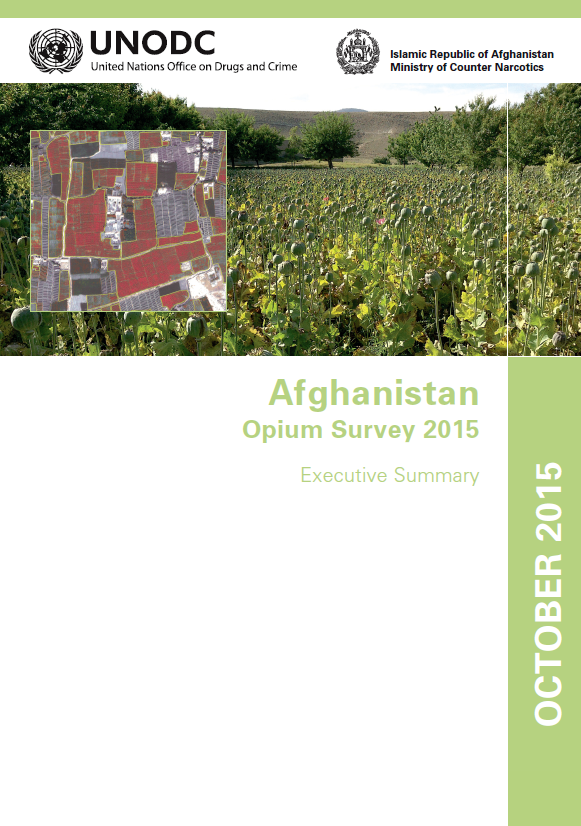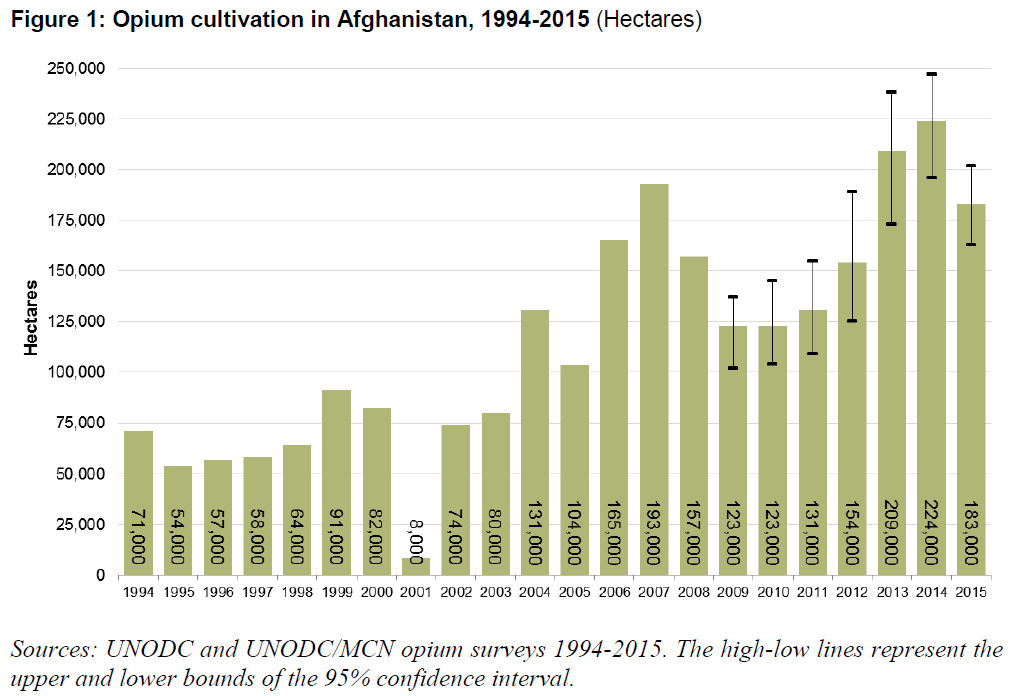The report presents the key findings of the Afghanistan Opium Survey 2015. The full report on cultivation and production will be published in November and a separate report with a socioeconomic analysis will be presented early 2016. The survey is implemented annually by MCN in collaboration with the UNODC. The survey team collects and analyses information on the location and extent of opium cultivation, potential opium production and the socio-economic situation in rural areas. Since 2005, MCN and UNODC have also been involved in the verification of opium eradication conducted by provincial governors and poppy-eradication forces. The information is essential for planning, implementing and monitoring the impact of measures required for tackling a problem that has serious implications for Afghanistan and the international community.
…
Area under opium poppy cultivation decreased by 19%
The total area under opium poppy cultivation in Afghanistan was estimated to be 183,000 hectares (163,000 – 202,000) in 2015, which represents a 19% decrease from 2014. Area under opium poppy cultivation has decreased for the first time since 2009 and is at its fourth highest level since the beginning of estimations in 1994; higher levels have been estimated in 2007, 2013 and 2014.
In 2015, 97% of total opium cultivation in Afghanistan took place in the Southern, Eastern and Western regions of the country, which include the country’s most insecure provinces. The Southern region accounted for 66% of total cultivation; the Western region for 24% and the Eastern region for 7%, where cultivation concentrated in Kapisa, Kunar, Laghman and Nangarhar provinces. The remaining regions (Northern, North-Eastern and Central) together accounted for 3%.


